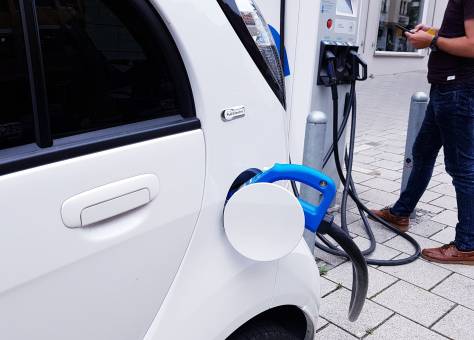
Norway’s electric vehicle adoption rate at 89%; complete transition is imminent
Dashveenjit Kaur has reported to Sustainability News the impressive announcement that Norway is set to reach 100% electric vehicle sales this year. Kudos must be given to Norway’s Government that has made electric vehicles a viable solution for all.
You can read the full article below.
Progressive policies and robust charging infrastructure have transformed Norway’s auto market, making it the first nation poised to phase out fossil fuel vehicle sales completely by 2025.
Norway’s remarkable electric vehicle adoption rate has set a new global benchmark. According to recent data from the Norwegian Road Federation (OFV), battery-powered vehicles accounted for nearly 90% of all new car sales in 2024.
This achievement positions the Nordic nation as the first country poised to phase out fossil fuel vehicle sales completely.
The journey toward this unprecedented electric vehicle adoption rate began in the 1990s, driven by progressive policies and tax incentives. Norway’s approach has been particularly notable for focusing on making electric vehicles financially attractive rather than simply mandating their adoption.
The Government’s consistent long-term strategy has created a stable environment for consumers and manufacturers, fostering confidence in the transition to electric mobility.
Infrastructure and incentives
The country has developed an extensive charging network, with over 27,000 public charging points serving its 5.5 million population. This translates to 447 chargers per 100,000 people, significantly surpassing other nations like the UK, with just 89 chargers per 100,000 residents.
The robust infrastructure has effectively addressed range anxiety, one of the primary concerns among potential electric vehicle adopters. Beyond charging infrastructure, Norway has implemented a comprehensive incentive package that has accelerated the adoption rate of electric vehicles.
These include:
- Exemption from purchase taxes and VAT
- Reduced road tolls and ferry fees
- Access to bus lanes in urban areas
- Free or reduced-cost parking in city centres
Market leadership and competition
Tesla, Volkswagen and Toyota are currently the leaders of Norway’s electric vehicle market. However, Chinese manufacturers, including MG, BYD, Polestar and XPeng, have collectively captured 10% of the market share, benefiting from Norway’s decision not to impose tariffs on Chinese electric vehicle imports.
This open market approach has increased competition and consumer choice, further driving the adoption rate of electric vehicles upward.
Policy success vs. global context
Norway’s electric vehicle adoption rate stands in stark contrast to other developed nations:
- Norway: 89% of new car sales (2024)
- United Kingdom: 20% of new registrations (2024)
- United States: 8% of new vehicle sales (2024)
The significant disparity in these figures highlights the importance of comprehensive policy frameworks in accelerating the transition to electric mobility.
Consumer experience
Norwegian drivers have embraced electric vehicles not just for environmental reasons but also for practical benefits. Ståle Fyen, who purchased his first electric vehicle 15 months ago, emphasises the economic advantages: “With all the incentives we have in Norway, with no taxes on EVs, that was quite important to us money-wise.”
Even in cold weather conditions, which can affect battery range by up to 20%, drivers report satisfaction with the extensive charging network and overall experience.
Challenges and considerations
While Norway’s success is impressive, it’s important to note that the country’s unique advantages have helped fund this transition. These include:
- Significant oil and gas exports
- Abundant hydroelectric power (88% of electricity production)
- Sovereign wealth fund valued at over $1.7 trillion
- The small population and concentrated urban centres
These factors have enabled substantial infrastructure investments and absorbed the revenue loss from reduced fossil fuel vehicle taxation. However, the core principles of Norway’s approach – consistent policies, robust infrastructure, and meaningful incentives – can be adapted to other contexts.
Looking ahead
Norwegian officials express confidence in reaching their 2025 goal of all new car sales being zero-emission vehicles. Christina Bu, secretary general of the Norwegian EV Association, said: “Electric cars have become the natural choice for most people,” suggesting that the high adoption rate of electric vehicles will likely continue upward.
Overall, the Norwegian model demonstrates that rapid electrification of personal transportation is achievable with the proper policy framework. Deputy Transport Minister Cecilie Knibe Kroglund emphasises that the key to success has been making zero-emission vehicles “a good and viable choice” rather than merely mandating their adoption.
While other countries may need to adapt these strategies to their specific contexts, Norway’s success provides valuable insights for accelerating global electric vehicle adoption rates. The experience shows that combining consumer incentives, infrastructure development, and long-term policy commitment can transform the automotive market toward sustainable alternatives.
As the world grapples with the challenges of climate change, Norway’s achievement offers a practical blueprint for other nations seeking to increase their electric vehicle adoption rates and transition to cleaner transportation systems.
